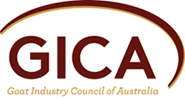The genesis of most practical and applicable research in agriculture comes from the producers themselves. By facing problems on a daily basis, resourceful producers often devise solutions on-farm through trial and error.
Producer Demonstration Sites (PDS) can accelerate this process by supporting groups of livestock producers and extension staff in demonstrating, developing and adopting priority research outcomes and technologies in their local environment.
One such PDS currently underway is Australia’s first goatmeat industry buck evaluation trial.
Initial results from this trial clearly show the variation in available genetics is greater than most producers estimate through visual selection.
Over 450 progeny, sired through artificial insemination by nine Boer bucks nominated by seedstock breeders from across Australia, are currently being compared for a range of commercially important traits in a trial being conducted near Cootamundra, NSW.
The buck evaluation trial, on Colin and Rob Ramsay’s property, aims to compare a range of Boer goat genetics through the collection of progeny performance data.
Born last September, the progeny were weighed at birth, weaning and early post weaning (120-210 days of age). Full pedigrees were collected for each kid along with a recording for birth type (single or multiple) and whether they were raised as a single or multiple to weaning.
As the data is collected, it is being analysed by the Sheep Genetics’ KIDPLAN program, with the performance of each buck being reported as Estimated Breeding Values (EBVs). EBVs allow the direct comparison of an animal’s genetics, eliminating the influence of environmental factors like seasonal conditions or birth type (ie twin or single kid).
Project manager for the trial, Ben Swain of BCS Agribusiness, says that the EBVs already generated by the trial demonstrate a wide range of genetic traits.
“Post weaning weight (PWT) EBVs have been released with the leading sire displaying a PWT EBV of +2.8kg, compared to -1.2kg for the lowest performing sire,” explained Ben.
“That’s a difference of 4.0kg between the EBVs of these two sires. As half of a kid’s genetics is going to come from the sire, if a breeder was to take these two sires home and join them to an even line of does, they would expect the kids from the leading sire to be on average 2kg heavier than the kids from the lower performing sire.”
While that does not seem a lot on an individual animal, it can make a significant difference to a breeder’s bottom line when applied across an entire herd.
“The goatmeat industry has much to gain through the adoption of EBVs. The sheep and cattle industries have already realised rapid rates of genetic gain and with it, increased profitability through the use of these breeding technologies,” Ben said.
During the next stage of the trial, progeny will be weighed as yearlings, have individual worm egg counts taken to assess resistance to worms and be scanned for eye muscle and fat depth. All progeny will also be fully assessed for a range of visual traits prior to the final results being released later this year.
A major field day will be held in October at which seedstock and commercial producers will be able to directly compare the progeny from each buck, together with the full range of EBVs that will be available.
This PDS confirms the importance of trials that run on working properties such as the Ramsay’s. Applications to undertake a PDS project can be submitted at any time throughout the year and, if successful, funding is made available for up to three years. Guidelines, selection criteria and applications can be found online. Interested goatmeat producers should refer to the “Southern beef, lamb and sheepmeat” guidelines and the “Lamb and sheepmeat” application or contact the Goat Industry Development Manager for further details:
Julie Petty
Phone: (07) 3620 5225
Email: jpetty@mla.com.au
